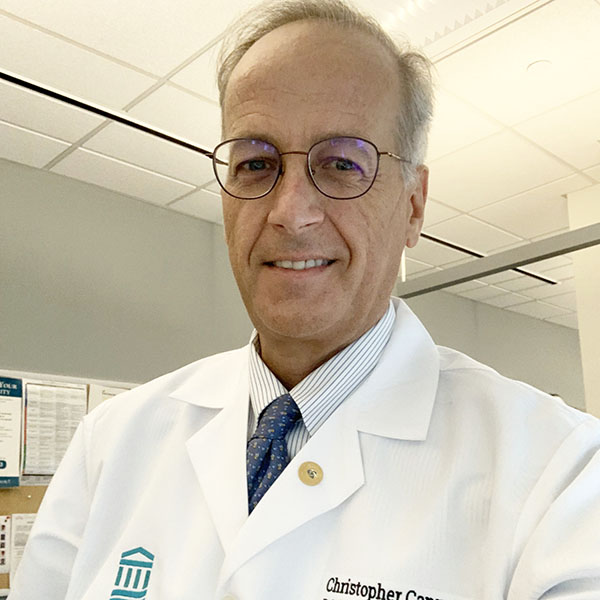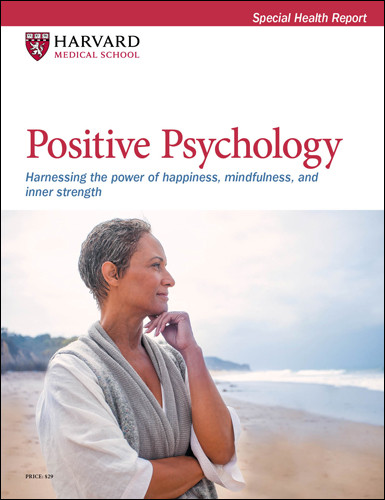Heart and soul: Spirituality in cardiovascular care
Reap the benefits of this practice — which encourages reflection on life's meaning and purpose — both in the hospital and everyday life.
- Reviewed by Christopher P. Cannon, MD, Editor in Chief, Harvard Heart Letter; Editorial Advisory Board Member, Harvard Health Publishing

Picture this: You're all alone in a hospital room in the early morning, awaiting the heart surgery you're scheduled for later that day. Or instead, imagine yourself in a chaotic hospital emergency department where you've just brought your mother, whose heart failure suddenly worsened in the middle of the night.
Many people have lived through these (or similar) scenarios, which are often fraught with worry and fear. But few people realize that most hospitals have a person who can provide emotional and spiritual support to patients and their families during such times. Available around the clock, they're known as chaplains, although the religious connotations of that term can be a source of confusion. While people often conflate religion and spirituality, think of the latter as an overarching concept that encompasses but does not necessarily include formal religious practice (see "Understanding spirituality and its connection to health").
To explain spiritual care and the role of chaplains in hospital settings, we consulted Sheila Cavanaugh, director of spiritual care services at Harvard-affiliated Brigham and Women's Hospital and Faulkner Hospital and her colleague, Amelia Catone, a chaplain and chaplain educator at Brigham and Women's.
Understanding spirituality and its connection to healthSpirituality refers to the ways in which people seek and experience meaning, purpose, and transcendence in their lives. This often includes a connection with something transcendent or greater than themselves, which might be a higher power, family, friends, a vocation, or nature. Religion, which falls under the umbrella of spirituality, is often defined as a specific set of organized beliefs and practices, usually shared by a community and grounded in traditions, history, and institutions. Growing evidence links spirituality with improved health outcomes, especially during times of serious illness, according to a review co-authored by experts from Harvard and other institutions, published July 12, 2022, in JAMA. Incorporating a person's spiritual or religious beliefs into their treatment plans can help them feel more connected to their medical care and increase their sense of control, the authors say. In everyday life, spiritual rituals such as meditation or prayer can help you elicit the relaxation response, a state of profound rest that helps counteract the harmful, heart-damaging effects of stress. Examples of prayers and phrases that can be deeply meaningful include "The Lord is my shepherd," "Hail Mary full of grace," "Sh'ma Yisrael," "Insh'Allah," and "Om Shanti." Even if you do not belong to a particular religious faith — as is true of 28% of Americans, according to a recent Pew Forum survey — consider choosing a phrase, such as "Grant me serenity," from a secular version of the Serenity Prayer, or "May all beings be filled with joy and peace." |
What is a chaplain?
Although the term chaplain comes from the Christian tradition, it refers to people from any religious or philosophical tradition who serve in religious or secular organizations such as hospitals, hospice facilities, universities, and prisons. Despite what some people assume, chaplains do not proselytize, nor are they called in only when someone is near death. Rather, they provide what Cavanaugh describes as "a deeply compassionate, nonjudgmental presence for patients and their families as they cope with questions about life's meaning and purpose." Spiritual care helps people explore their sources of comfort and hope while coping with the challenge of a diagnosis.
"When I knock on a patient's door and introduce myself as the chaplain, some people say, 'Oh, I'm not religious,' or 'No thanks, I'm good with church.' But I explain that I'm not there to talk about religion but rather to offer accompaniment and solace," says Cavanaugh.
Meeting different needs
When people are first admitted to the hospital, they're often asked about their religious or spiritual affiliation and whether they would like to see a chaplain, although uncertainty about what chaplains do may prevent people from saying yes, says Catone. In addition, at most hospitals, a chaplain is always on call to respond to both routine and urgent requests.
Each morning at Brigham and Women's, a chaplain visits every person scheduled for surgery that day to offer company, well wishes, or a prayer, if that's part of the patient's belief system. The staff includes chaplains who are Buddhist, Catholic, Christian, Humanist, Jewish, Muslim, Protestant, and Quaker.
A chaplain also responds to every code blue alert, which refers to a medical emergency — usually cardiac arrest or respiratory distress or failure—that requires resuscitation by medical personnel. "During these times, we may attend to a family member to offer an extra layer of support, and we may also speak with doctors and other staff to help them process their emotions after a code," Catone says. In addition, if anyone on the medical staff notices that a patient seems emotionally distraught, they can contact the spiritual care department to request a chaplain visit for that person.
Finding faith and hope
"When someone is hospitalized, they come face to face with the reality that their body is subject to illness and will eventually die," says Catone. Heart disease in particular can bring this awareness into sharp focus, given the disease's longstanding rank as the leading cause of death in this country. Although a hospital environment sometimes feels dehumanizing, speaking with a chaplain often helps people feel more in touch with their own humanity. Catone often asks patients, "What is the most important thing for you right now?" It may be to have more time to spend with family, work in the garden, or travel. Voicing those desires can instill hope and be life-affirming, she says.
Some people experience a crisis of faith after a serious diagnosis, because it rattles the sense of meaning they've created for their own life, says Cavanaugh. "The role of a chaplain is to listen closely and to draw out the narrative of the person's life and reflect back on times when they found strength and relied on internal resources for overcoming trauma in the past," she says. Chaplains don't have to share a patient's faith to enable a transformational experience that comforts and uplifts them, she says.
Image: © Ridofranz/Getty Images
About the Author

Julie Corliss, Executive Editor, Harvard Heart Letter
About the Reviewer

Christopher P. Cannon, MD, Editor in Chief, Harvard Heart Letter; Editorial Advisory Board Member, Harvard Health Publishing
Disclaimer:
As a service to our readers, Harvard Health Publishing provides access to our library of archived content. Please note the date of last review or update on all articles.
No content on this site, regardless of date, should ever be used as a substitute for direct medical advice from your doctor or other qualified clinician.
















